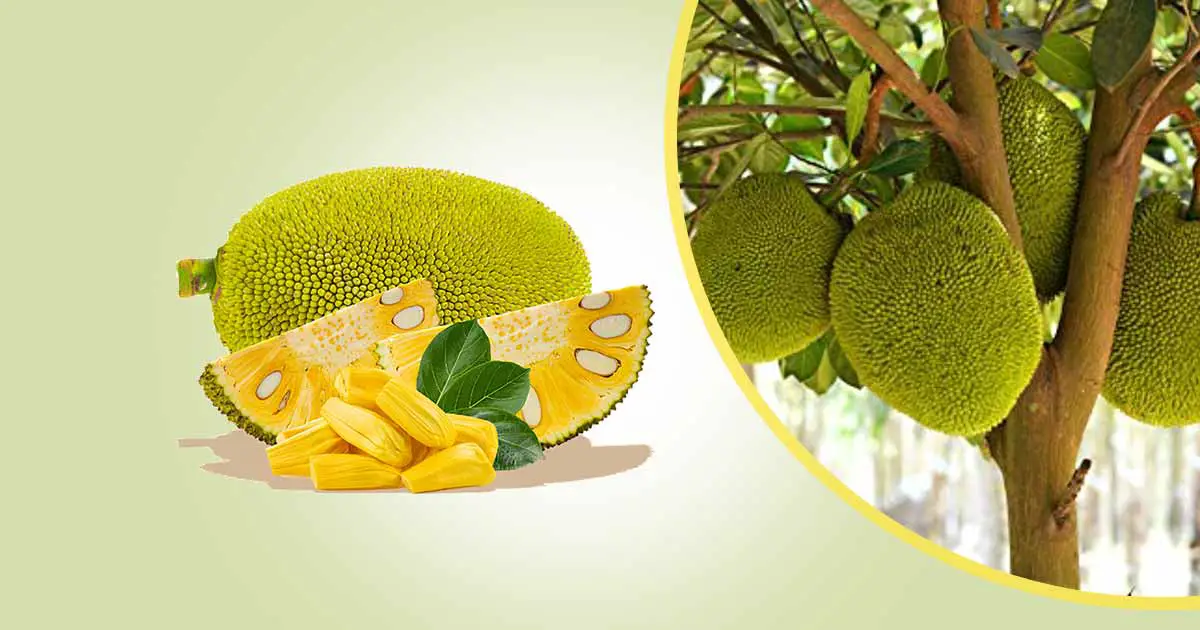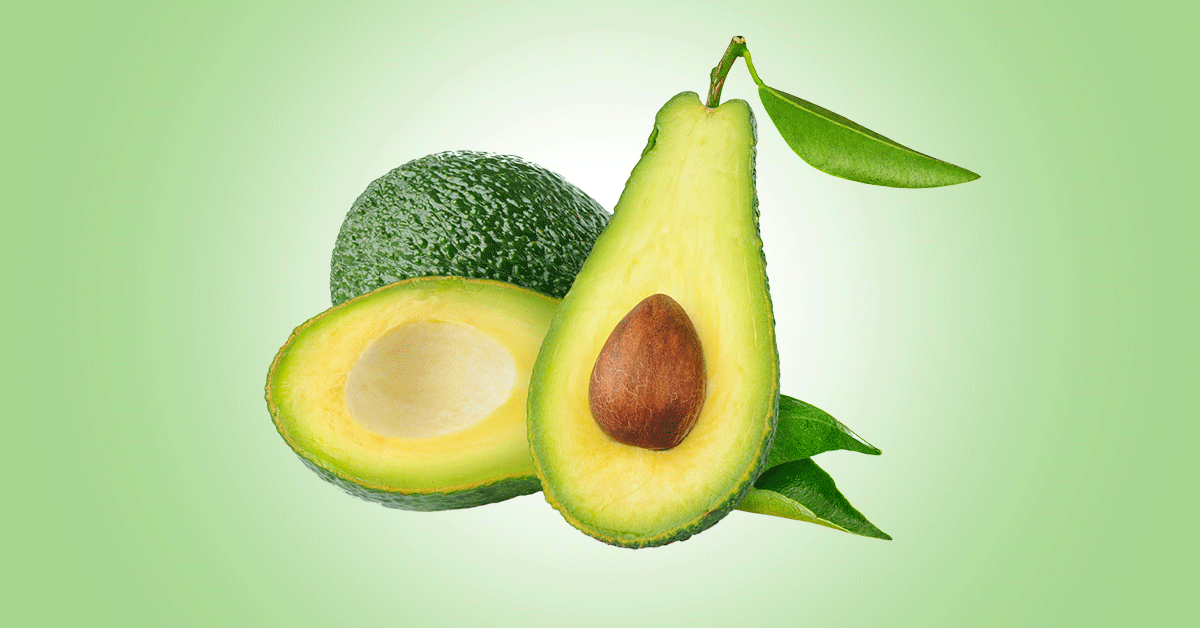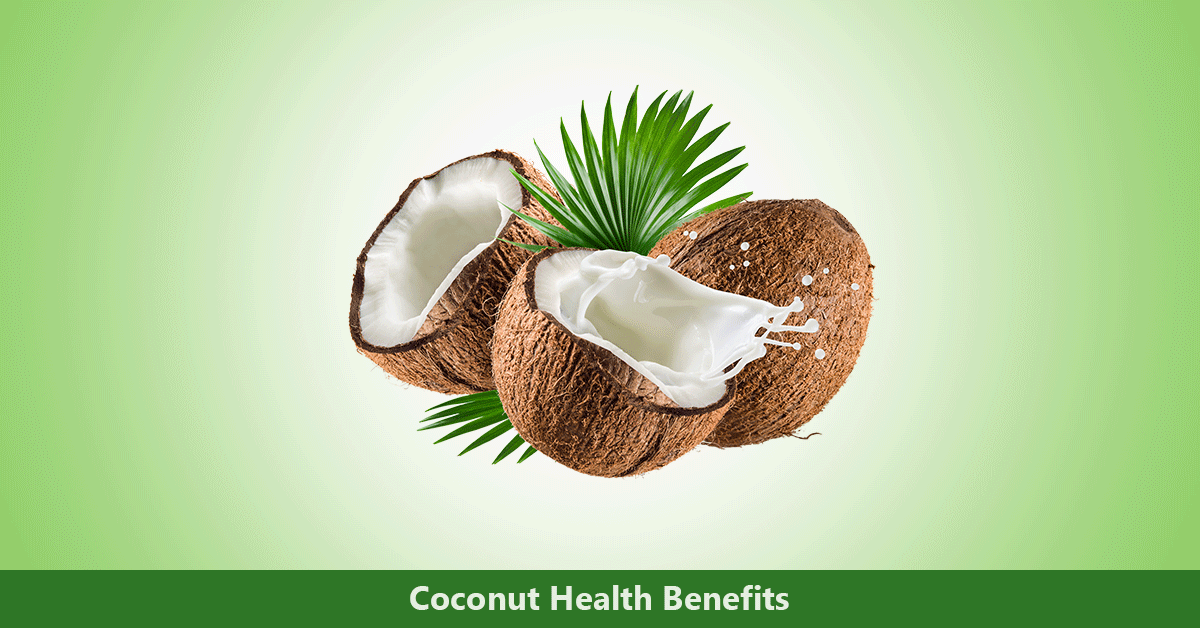Jackfruit (Artocarpus heterophyllus) is a plant species in the fig, mulberry, and breadfruit family (Moraceae). Jackfruit is the largest tree-borne fruit, with size up to 40 kg (88.18 lb) in size. The ripe fruit is sweet, and used as desserts. When fully ripe, the jackfruit produces a strong, disagreeable odor similar to decayed onions, but the pulp of the opened fruit smells of pineapple and banana.
Jackfruit is native to the Western Ghats of the Indian Peninsula. The tree grows well in the tropical lowlands, and is cultivated throughout South and South-East Asia (India, China, Malaysia, China) USA, Brazil, Mexico, Australia, India, Suriname, East Africa (Uganda, Tanzania, Kenya) and the Caribbean. India, Bangladesh, Thailand, Indonesia, and Nepal are the world’s largest producers of jackfruit.
There are two main varieties, one has sweet, small, fibrous, soft, and mushy pulp. The other type is lesser sweet, crisp and almost crunchy.
Jackfruit is a tall evergreen plant that can grow up to 30 m height. All parts of the plants such as the trunk, leaves, and fruit produces a white, sticky latex. The leaves of the plant are dark-green, shiny above, pale green below, elliptical-obovate, wide with entire margins. Young leaves may be lobed, while the shoots, twigs, and leaves are usually glabrous (non-hairy).
The fruit is a multiple fruit made of multiple flowers. It hangs from the thick stalks on the trunk and main branches. Though jackfruit is the largest fruit in the world, some cultivars can be small fruited. The fruit is roughly oblong, green when unripe and green, greenish yellow to brownish-yellow when ripe.
Fruit skin is rough and thick. On opening the fruit, we get an edible sweet, aromatic, crispy, soft or melting pulp, which surround each seed. An inedible “rag” exist between the seed and pulp. Jackfruit pulp can be amber to yellow, dark yellow or orange colored. Seeds, which can range from 30 to 500 per fruit, are 2 to 3 cm long, waxy and oval. The bark of the tree is rough or scaly, dark grey to greyish brown.
The plant grows well in well drained soils, but mostly deep alluvial soils. It does not tolerate drought and flooding. Jackfruit produces fruit throughout the years but peaks in October and November.
Common names of jackfruit includes palap palam (Tamil), Boluomi (Mandarin), Nangka (Indonesia, Malaysia), Khanoon (Lao), Mít (Vietnam), Khnol (Khmer), kathal, jaqueira, jaqueiro (Portuguese), bo luo mi, jacquier (French), jackfruchtbaum (German).
Canned green jackfruit has a mild taste, chicken-like taste, and meat-like texture and is called a ‘vegetable meat’. It’s a meat subtitute for vegetarians and vegans. The immature pulp is used in Asian dishes such as curries, pickles, or cooked as a vegetable.
The mature pulp is eaten fresh, or made into delicacies, chutney, jam, jelly, ice creams, juices, and paste. The young leaves and immature flowers are used as vegetable. With high nutritional content of vitamine A, sulphur, calcium and phosphorus, the seeds can be eaten as snacks, boiled or ground and blended with wheat flour to produce baking flour.
Medicinally, the boiled roots are used in asthma treatment. Root extract is also used for skin disorder, diarrhea, and fever.
The latex resin is used in vanishes, as glue, rubber substitute, while the bark is a source of dye.
Nutritional Composition
A 100g of raw jackfruit contains 73.5 g of water, 95 kcal of energy, 1.72 g of proteins, 23.2 g of carbohydrates, 19.1 g of sugars (glucose, fructose, sucrose), 1.47 g of starch, 0.64 g of fats, 1.5 g of dietary fiber and 0.94 g of ash (Source: USDA)
- Minerals: potassium (448 mg), magnesium (29 mg), calcium (24 mg), iron, phosphorus, copper, manganese, sodium, zinc
- Vitamins: vitamin C, vitamin A, B-6, E, thiamine, riboflavin, niacin, pantothenic acid, folate.
Bioactive Compounds
Jackfruit contains good quantity of beta-carotene, lutein + zeaxanthin. The pigment, beta-carotene, gives the fruit its color.
It also has amino acids (glutamic, aspartic, arginine are the most abundant), saturated fatty acids, monounsaturated fatty acids, and polyunsaturated fatty acids.
- Flavonoids: Artocarpine, Artocarpetin, Artonins A, Morin, Dihydromorin, Artocarpanone, Artocarpesin
- Carotenoids: 2-carotene, 1-carotene, 1-zeacarotene, 2-zeacarotene, Dicarboxylic Carotenoids
- Volatile compounds: Isopentylisovalerate, Butyl isovalerate, Butyl Acetate
- Tannins
- Lecithin: jacalin
- Organic acids: malic acid, citric acid
- Fatty acids: capric, myristic, lauric, palmitic, oleic, stearic acids
- The heartwood yields moisture, lipids, glucosides, proteins, cellulose.
Health Benefits of Jackfruit
Antioxidants:
Jackfruit contains vitamin C, vitamin E, polyphenols, flavonoids, and many carotenoids including all trans-β-carotene. Cycloheterophyllin and artonins A and B are particularly potent antioxidants. Antioxidant compounds help to prevent inflammatory conditions, cancer, cardiovascular diseases, and neurodegenerative diseases.
Cardiovascular effect:
Jackfruit contains high quantity of antioxidants, minerals such as potassium, and magnesium that helps to lower blood pressure and improve circulation. Also, beta-carotene may reduce their risk of developing heart disease or cancer.
Anti-inflammatory effect:
Phenolic compounds in jackfruit extract, such as artocarpesin, norartocarpetin, oxyresveratrol are potent anti-inflammatory compounds that inhibit the production of proinflammatory mediators in
lipopolysaccharide (LPS)-activated murine macrophage cells.
Also, artocarpesin inhibited the LPS-induced production of nitric oxide (NO) and prostaglandin E 2 (PGE 2) by down-regulation of inducible nitric oxide synthase (iNOS) and cyclooxygenase 2 (COX-2) protein expressions.
Anti-diabetic effect:
The extracts of Artocarpus heterophyllus improved the glucose tolerance significantly in the normal subjects and the diabetic patients. In a study by A. Gopal Rao et al., green jackfruit flour can be used as a medical nutrition therapy, and can replace rice or wheat in diabetic patients. It proved effective in lowering the HbA1c, FPG, and PPG.
Jackfruit has good dietary fiber content and low calories, which makes it beneficial in diabetes.
Antibacterial activity:
The leaf extract of jackfruit inhibits food-borne pathogens such as E. coli, Salmonella typhimurium, and Salmonella enterica. Additionally, the leaf extract inhibit Listeria monocytogenes, Bacillus cereus, Enterococcus faecalis, and S. aureus, while the heartwood has antibacterial activities against Bacillus subtilis, Streptococcus mutans, Streptococcus pyogenes, S. aureus and Staphylococcus epidermidis.
Antifungal activity:
Jackfruit leaf extract inhibits Colletotrichum gloeosporioides and Penicillium italicum, due to presence of phenolic compounds such as quinic acid, catechin, and chlorogenic acid. It can be used in post-harvest preservation.
Also, lecithin from breadfruit and jackfruit called jackin inhibited the growth of Fusarium moniliforme and Saccharomyces cerevisiae.
Anti-obesity activity:
In a study by Soo Peng Koh et al., using a selected symbiotic culture of bacteria and yeast (SCOBY) jackfruit pulp, and jackfruit leaves on mice, it showed good weight control. It improved parameters suCH as glucose transport, lipid biosynthesis, inflammatory cytokines, and chemokines in the adipose tissue.
Effect on sexual health:
Some reports claim that the roasted seeds of the jack fruit has aphrodisiac activity, while some reports disputes that, and rather asserts that it hinders sexual function.
However, rat studies with the seed suspension in 1% methylcellulose resulted in inhibition of libido, sexual arousal, sexual vigor and sexual performance within 2 hours.
Anthelmintic effect:
The shoot extract has nematicidal activity against nematodes such as Rotylenchulus reniformis, Tylenchorhynchus brassicae, Tylenchus filifofmis and Meloidogyne incognita.
Inhibits melanin synthesis:
Some compounds such as prenylated, flavones based polyphenols from the wood of the plant inhibit the in vivo melanin biosynthesis in B16 melanoma cells, with almost no cytotoxicity.
Improves digestion:
Since the fruit contains low calories, and high dietary fiber content, it can aid digestion. Fiber add bulk to the stool and improve bowel movement.
Side Effects
Jackfruit can cause allergic reaction in people with birch pollen allergies. Due to high fiber content, it may cause stomach disturbance when overconsumed.
Also, some studies suggest jackfruit may inhibit sexual arousal, libido, performance, and vigor in men.
References
- https://www.cabidigitallibrary.org/doi/book/10.1079/9781800622319.0000#:~:text=Jackfruit%20(Artocarpus%20heterophyllus)%2C%20is,South%20and%20South%2DEast%20Asia.
- http://www.itfnet.org/gfruit/Templates%20English/jackfruit.biology.htm
- https://www.feedipedia.org/node/185
- https://fdc.nal.usda.gov/fdc-app.html#/food-details/174687/nutrients
- https://www.researchgate.net/publication/304908079_JACKFRUIT_A_HEALTH_BOON
- https://www.academia.edu/9027285/Jackfruit_and_Its_Many_Functional_Components_as_Related_to_Human_Health_A_Review
- https://www.ncbi.nlm.nih.gov/pmc/articles/PMC8203736/
- https://www.scielo.br/j/cta/a/fDN8qvCMJNnRnQtkFtyFRGz/
- https://www.xiahepublishing.com/2472-0712/ERHM-2021-00072












